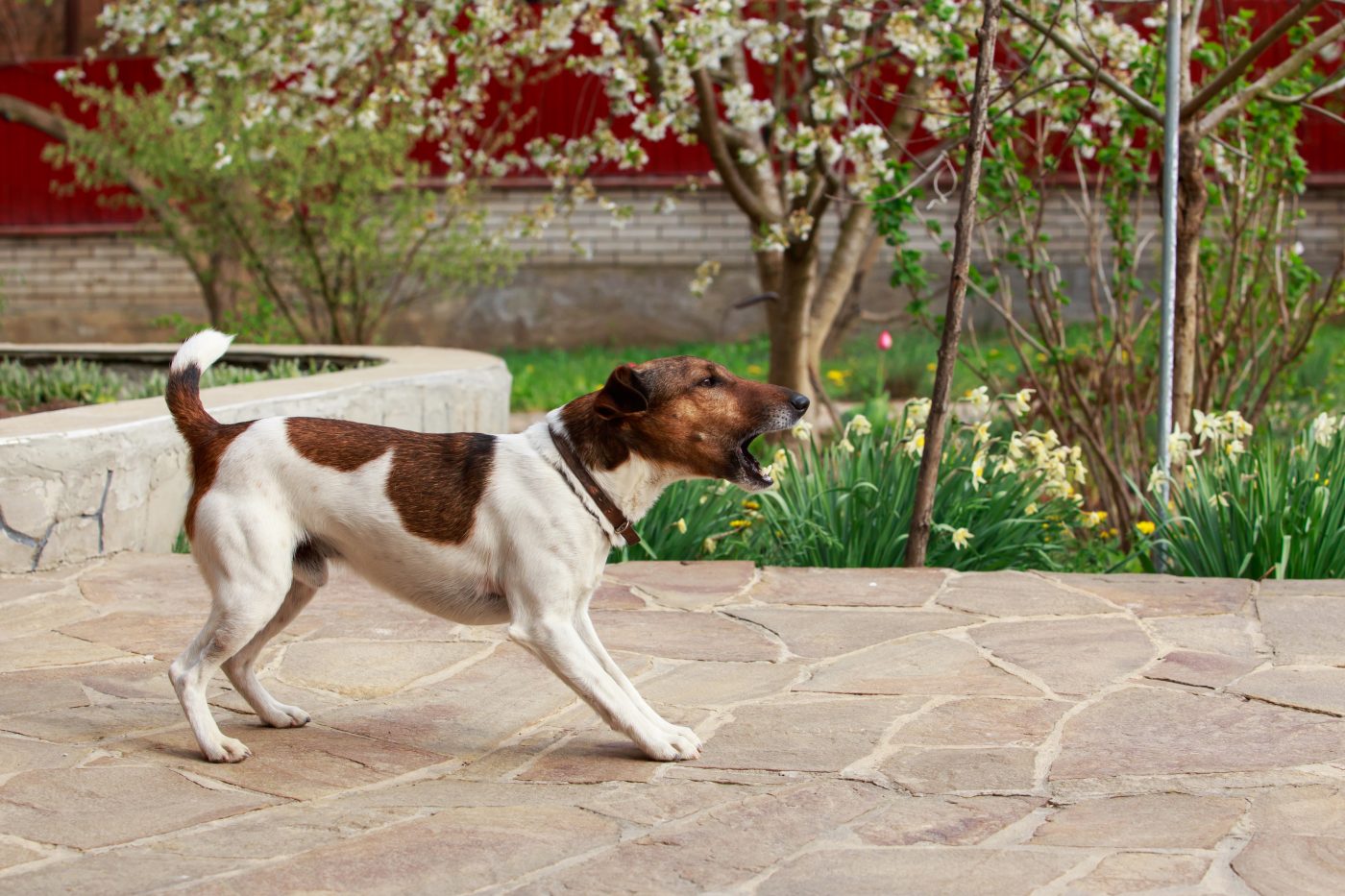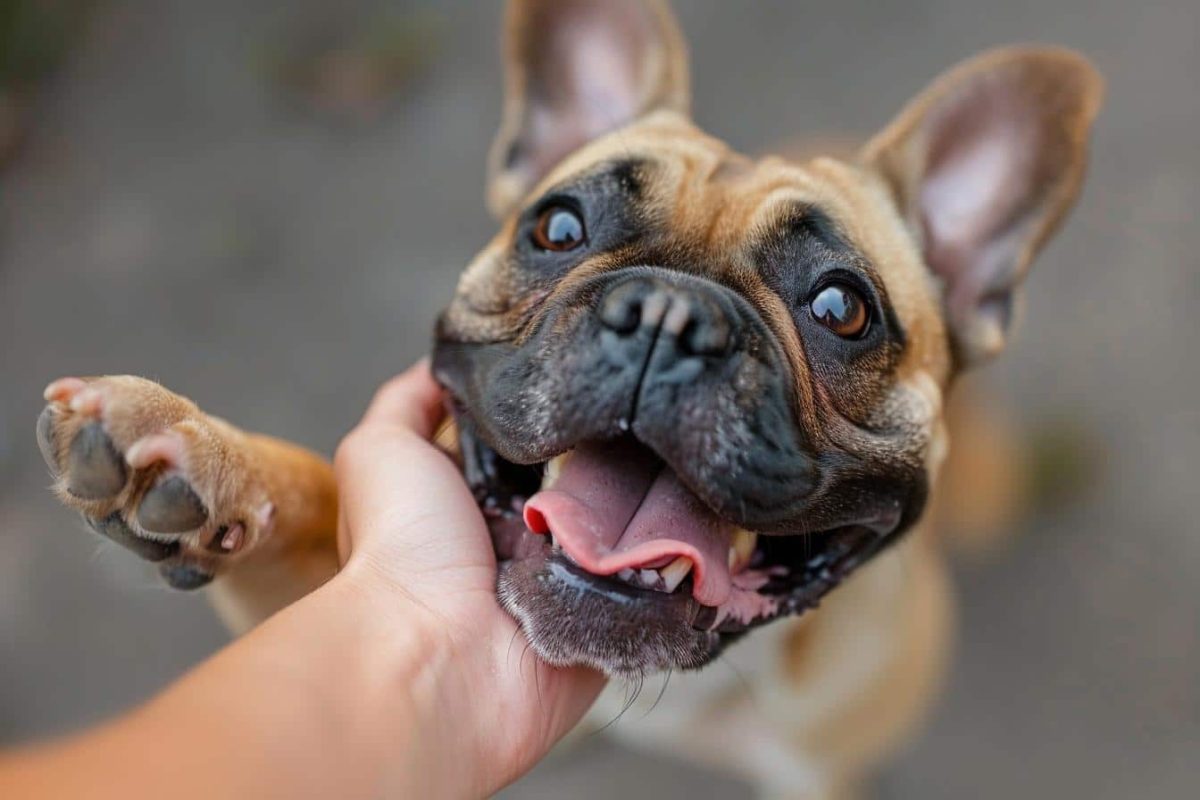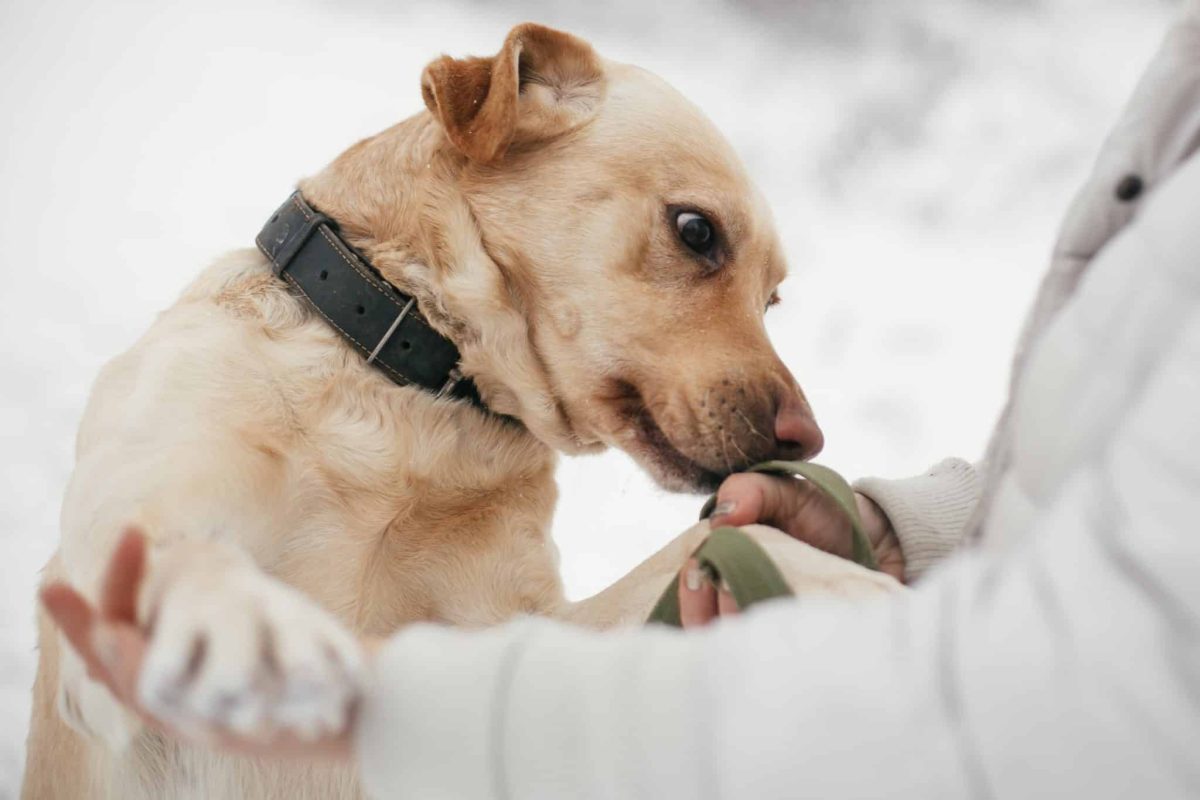 Shutterstock
Shutterstock
Dogs communicate powerfully through their body language, sending messages that are often overlooked. While barking and whining are obvious, many dogs rely on subtle physical cues to convey their emotions. By understanding these silent signals, we can respond more effectively to our dogs’ needs, strengthening the bond we share. Recognizing their nonverbal communication allows us to connect with our furry companions on a deeper level, fostering trust and ensuring a more harmonious relationship with our beloved pets.
Tail Wagging
 Shutterstock
Shutterstock
Tail wagging is one of the most iconic signs of dog communication, but its meaning is more complex than many realize. A wagging tail can convey a range of emotions depending on its speed, position, and movement. For instance, a wag held high and stiff usually signals alertness or excitement, while a slow wag with a lowered tail may suggest insecurity. A relaxed, wide wag generally means the dog is happy and comfortable, indicating friendliness and joy in the moment.
Raised Hackles
 Shutterstock
Shutterstock
When a dog’s hackles are raised, it can be a sign of heightened alertness or potential aggression. This response is triggered when the dog feels threatened or sees something they consider a potential danger. However, raised hackles can also be a reaction to excitement, such as when a dog encounters a new scent or unfamiliar situation. The raised fur makes the dog appear larger, signaling their readiness to face whatever they perceive as a threat.
Lip Licking and Yawning
 Shutterstock
Shutterstock
Dogs often use lip licking and yawning to communicate discomfort or stress. While yawning is typically seen as a sign of relaxation, it can also occur when a dog is anxious or trying to calm themselves down. Similarly, lip licking can indicate unease, especially when the dog is in a new or overwhelming situation. Both behaviors are subtle but effective ways dogs communicate that they are feeling out of their element, signaling a need for comfort or reassurance.
The “Play Bow”
 Shutterstock
Shutterstock
A play bow is an unmistakable sign that your dog is in a playful mood and wants to interact. This behavior involves the dog lowering their front end while keeping their rear end up in the air, inviting others to join in the fun. It’s a clear, non-threatening gesture that communicates excitement and joy. When dogs engage in a play bow, they are signaling that they wish to initiate play, showing no intention of aggression.
Staring
 Shutterstock
Shutterstock
Staring is a nuanced form of communication that can express various feelings, depending on the context. A soft, gentle stare from your dog usually signals affection and trust, especially if paired with relaxed body language. However, if your dog maintains eye contact with a rigid body and tense posture, it could indicate a challenge or possible aggression. Understanding the difference between these types of stares is crucial in interpreting what your dog is trying to convey in a particular situation.
Exposing Belly
 Shutterstock
Shutterstock
When a dog rolls over to expose their belly, it often signals submission and trust. This vulnerable position shows that the dog feels safe and is not interested in being confrontational. However, some dogs may expose their belly not only for trust but also to request a belly rub, which they enjoy. It’s essential to observe other body language signs, as a dog that exposes its belly could also be signaling discomfort if paired with tension or avoidance behavior.
Ears Back
 Shutterstock
Shutterstock
A dog’s ears are a key indicator of their emotional state. When a dog pulls its ears back flat against the head, it often signals anxiety, fear, or submission. This posture typically accompanies other signs of unease, such as a tucked tail or avoidance behavior. However, some dogs naturally have ears that lay back without indicating fear or anxiety, so it’s important to consider the dog’s breed and overall body language when interpreting this signal.
Cowering or Hiding
 Shutterstock
Shutterstock
Cowering or hiding is a clear signal that a dog feels threatened, scared, or overwhelmed. When a dog seeks out a hiding spot or lowers its body to the ground, it may be trying to make itself less noticeable in a stressful situation. This behavior can also stem from a past traumatic experience or simply being placed in an unfamiliar environment. Understanding this subtle cue helps owners create a safer, more comforting environment for their dogs.
Quick Turning of Head
 Shutterstock
Shutterstock
When a dog quickly turns its head away from a situation or person, it is often a de-escalating gesture. Known as a “calming signal,” this behavior is used to show that the dog does not want to engage or is trying to diffuse tension. It’s a subtle way for dogs to express that they are feeling uncomfortable but do not want to react aggressively. Understanding this signal can help owners respond to their dogs’ needs for space in tense situations.
Raised Front Legs
 Shutterstock
Shutterstock
Raising one or both front legs is a common body language sign seen in dogs when they are feeling cautious or curious. This behavior is often exhibited when dogs are encountering something unfamiliar or new. By raising their front legs, they show hesitation, as they’re unsure whether to proceed. This small but meaningful action is a signal that your dog is taking a careful, measured approach to an unknown situation.
Panting
 Shutterstock
Shutterstock
While panting is most commonly associated with heat or physical exertion, it can also be a sign of anxiety or stress. Dogs who are feeling nervous, overwhelmed, or frightened will sometimes pant heavily, even when they are not physically active. It’s important to observe other body language signs, such as pacing or trembling, to determine whether the panting is related to excitement or anxiety. Knowing when your dog is stressed can help you take steps to calm them down.
Tail Tucking
 Shutterstock
Shutterstock
Tail tucking is a sign of fear, insecurity, or submission in dogs. When a dog tucks its tail between its legs, it is often trying to make itself appear smaller and less threatening in response to something that scares it. This behavior is often seen when a dog is intimidated by a new person, environment, or situation. It’s important to recognize this signal, as it suggests that your dog may need reassurance or a safe space to feel comfortable again.
Fast or Short Movements
 Shutterstock
Shutterstock
Fast or short movements are usually a sign of nervous energy or excitement in dogs. When a dog makes quick, sharp movements, it indicates they are feeling uncertain or unsettled. These movements can occur when a dog is meeting someone new or encountering an unfamiliar situation. It’s a subtle but important body language cue that suggests the dog is testing the waters and trying to decide how to react to the circumstances.
The Silent Language Of Dogs
 MidJourney
MidJourney
Dogs communicate without words, using their body language to express their feelings and needs. Understanding these subtle cues helps us connect more deeply with our pets and respond appropriately. By tuning in to their silent signals, we can strengthen our bond, ensure their comfort, and make them feel secure. Dogs may not speak our language, but their nonverbal communication can tell us everything we need to know. So, next time your dog gives a side-eye or belly rub request, pay attention—they’re speaking volumes.

 1 month ago
15
1 month ago
15


















 English (US) ·
English (US) ·